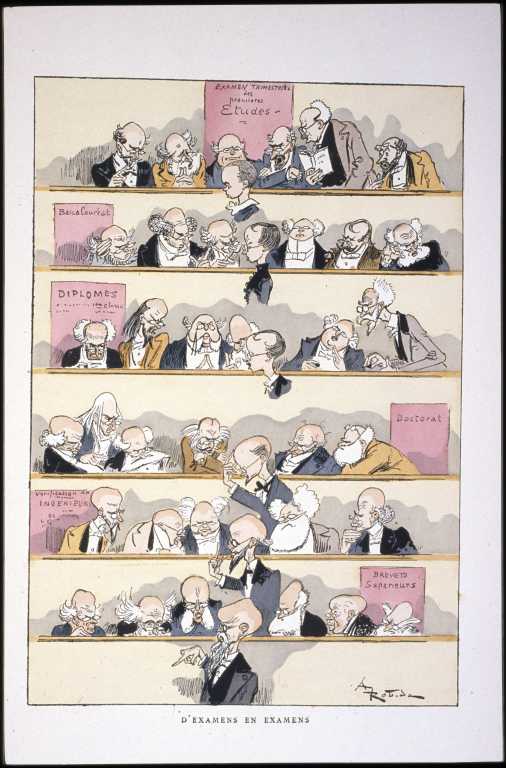Warning: This May Be Hazardous to Your Vision
Excellence. There must be a catch. And a prominent New York pediatric ophthalmologist, Dr. Mark Steele, says there's a downside to the city's ultra-selective private schools, according to the New York Post:
"The kids in private school do more reading, and that puts them at increased risk. Youngsters doing a lot of reading tend to become nearsighted. The bulk of students get it between the ages of nine and 14."
When nearsighted kids shows up in his Upper West Side office, Steele said, he often diagnoses them as "private school" or "selective magnet school."
"Does your child go to Hunter College Elementary?" he jokes with parents, who often admit he's right.
If it's any comfort to students and parents, there's a long tradition of alarm about the dangers of bookishness. Often a panic over flagging competitiveness and resulting educational reforms have produced a medical counteroffensive on the perils facing the new bookish generation. This attitude reached a peak in the late nineteenth century, as European and North American educational systems were expanded. The historian of science Roy Porter wrote a wonderful tongue-in-cheek piece on anxieties over the centuries, "Reading Is Bad for Your Health." (subscription required; in many public library databases) In the early 1880s, the French caricaturist and science fiction writer Albert Robida lampooned the likely consequences of hothouse education and examination mania for eyes, mind, and body, "From Exams to Exams":

Public-spirited physicians of the later nineteenth century like Dr. Hermann Cohn of Breslau in Prussian Silesia (now Wrocław, Poland) documented how urban schoolchildren were falling behind the sharp distance eyesight of rugged outdoor folk in remote rural districts, but results of his reforms were disappointing. (I've written more about the amazing Dr.Cohn and ideas about myopia elsewhere.) Vision anxiety could be compounded by xenophobia. As Alex von Tunzelmann's review of Richard Overy's The Twilight Years notes:
The birth control pioneer and eugenicist Marie Stopes, concerned with the decline in what she called the "imperial race," disowned her own son because he married a woman who wore spectacles.
There may be a dose-response relationship between educational quality and vision problems. In Singapore, renowned for its schools, the government's eye health site has a page on childhood myopia that regards reading as a more promising explanation than alternatives. Whatever the reason, more than 80 percent of 18-year-old males in Singapore are now myopic.Prevalence of myopia elsewhere in Asia has prompted establishment of a research institute at Hong Kong Polytechnic University to understand and combat myopia progression and educate health care providers and the public.
All the more reason to be concerned about the global rise of smartphones. The Newark Star-Ledger columnist Allan Hoffman predicts:
You may soon start feeling nostalgic about your computer, thinking of it as an archaic throwback, akin to a turntable or an eight-track tape.The recent disclosures about a Google phone may be a turning point in the history of the personal computer. PCs had their heyday, and it was yesterday. Now is the moment for the phone.
Yes, rates of myopia are a complex medical and ergonomic topic, ideas on it are still evolving, and that single-cause explanations of anything invariably turn out to be much too simple. But if conventional printed books and equivalent-size monitors have indeed been hazardous to our eyesight, what of the iPhone's 3.5-inch, 480x320-pixel display in the age of the e-book? Could it become the visual counterpart of earbuds?